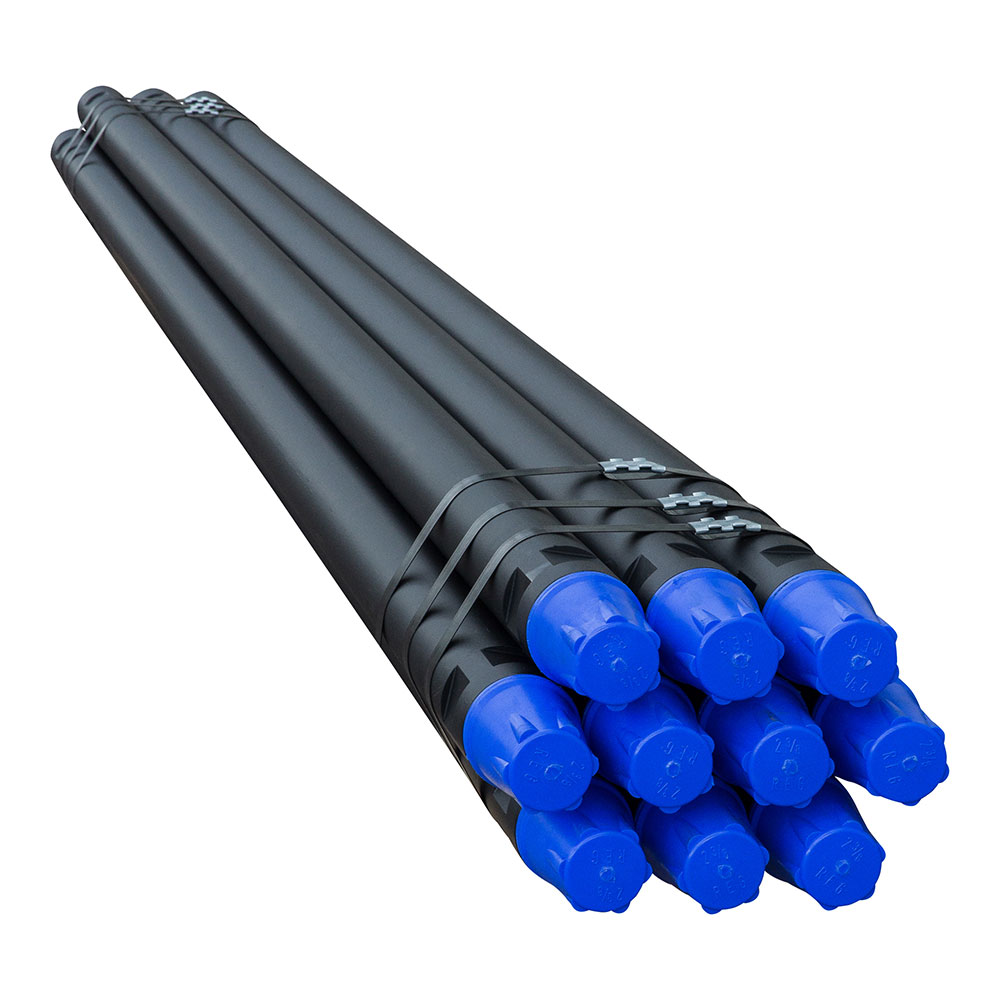Cutting or Crushing
Unlike DTH drilling, rotary drilling does not require force in the form of a hammer blow. Instead, rotary drilling creates a very large compressive force along the drill string, in combination with rotational movement.
Rotary drilling was a common drilling method in the oil industry in the early 20th century. Today the method is used primarily when large diameters (over 150 mm) are required, such as in deep waterwell drilling, open-cast mining, and quarrying. There are currently two types of rotary drilling, cutting, and crushing.
Rotating Cutting Drilling
Rotating cutting drilling is a common method for drilling in softer materials such as sand, clay, and soft rock. A drag bit is used instead of a normal drill bit. This bit has 2-4 wings with carbide tips that cut up the material by pressure and rotation.
Rotating Crushing Drilling
Rotating crushing drilling uses a tricone drill bit. This drill bit has tungsten carbide bits designed for drilling in harder materials. The bits crush the rock by means of pressure and rotational movement.
Unlike DTH drilling, rotary drilling does not require force in the form of a hammer blow. Instead, rotary drilling creates a very large compressive force along the drill string, in combination with rotational movement.
Rotary drilling was a common drilling method in the oil industry in the early 20th century. Today the method is used primarily when large diameters (over 150 mm) are required, such as in deep waterwell drilling, open-cast mining, and quarrying. There are currently two types of rotary drilling, cutting, and crushing.
Rotating Cutting Drilling
Rotating cutting drilling is a common method for drilling in softer materials such as sand, clay, and soft rock. A drag bit is used instead of a normal drill bit. This bit has 2-4 wings with carbide tips that cut up the material by pressure and rotation.
Rotating Crushing Drilling
Rotating crushing drilling uses a tricone drill bit. This drill bit has tungsten carbide bits designed for drilling in harder materials. The bits crush the rock by means of pressure and rotational movement.

